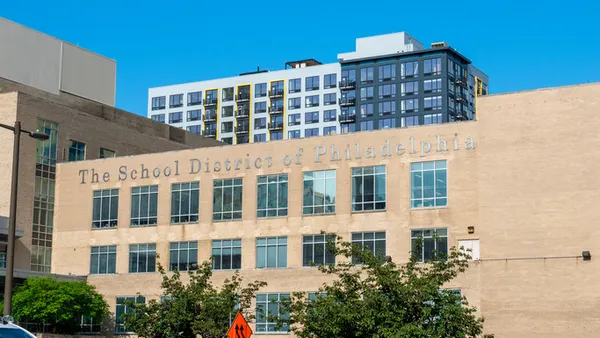Dive Brief:
- To better support K-12 services for incoming immigrant and refugee students, a few federal policy and financial adjustments are needed, according to a report from Next 100, a progressive policy think tank.
- Among the report's recommendations is a call to undo limitations for subgrant funding dedicated to English learners and immigrant students in Title III, and to instead establish a formula grant system for Title III immigrant subgrants. The report also urges the U.S. Department of Education to formally define immigrant students for consistency across states and districts.
- The growth in the English learner population, as well as recent arrivals of refugee and unaccompanied children, makes this a critical issue for educators, according to the report. About 108,000 unaccompanied children were released to sponsors between Oct. 1, 2021, and July 2022, according to the U.S. Department of Health and Human Services.
Dive Insight:
"As the first major institution that students encounter upon their arrival to the U.S., it is our duty to equip schools with meeting that challenge for every child to thrive," writes the report's author, Alejandra Vázquez Baur, a policy entrepreneur at Next 100.
Increases in English learners, immigrant and refugee students have prompted districts and their communities to strategize on how to coordinate academic, housing, nutrition and other services.
The New York City Department of Education, for instance, last month initiated "Project Open Arms" to provide wraparound services for newcomer children and their families. The school system is expecting at least 1,000 children of asylum seekers, including preschoolers, to enroll in city schools this academic year.
Also in August, a national group of 80 educators, researchers, parents and advocacy organizations asked the Education Department to build awareness and support for newcomer students by setting common data collection definitions, providing curriculum resources and professional development, and holding a national conference to encourage collaboration for student supports.
The Elementary and Secondary Education Act, for purposes of Title III grant allocations, currently defines ”immigrant children and youth″ as individuals ages 3-21 who were not born in any U.S. state and have not been attending schools in one or more states for more than three full academic years.
The Next 100 report said today's funding method caps Title III Immigrant subgrants at 15%, which allows states to allocate less than that amount and hampers districts' abilities to access sufficient funding.
States can reserve no more than 15% of their total allocation for Title III Immigrant subgrants to districts that have experienced a significant increase in the percentage or number of immigrant children and youth, as compared to the average of the two preceding fiscal years.
That increase is defined by each state education agency and adjusted as needed each year. The remaining funds are distributed as Title III English Language Acquisition formula subgrants based on the number of English learners in each district.
By standardizing these allocations, districts would be better able to plan for long-term sustainability of resources immediately when newcomer immigrant students arrive, as well as throughout their first years in U.S. schools, the report said.
The federal emergency money provided to school systems to help with COVID-19 recovery efforts offers several model lessons on how districts used part of their allocations to support newcomer students, the report said.
For example, according to an American Rescue Plan budget for Montgomery County Public Schools in Maryland, the district planned to hire a coordinator for unaccompanied minors at $226,092 for two years. The coordinator would organize school-based services, learning programs and connect students and their families or sponsors to wraparound supports, among other services, according to the district's spending plan.













